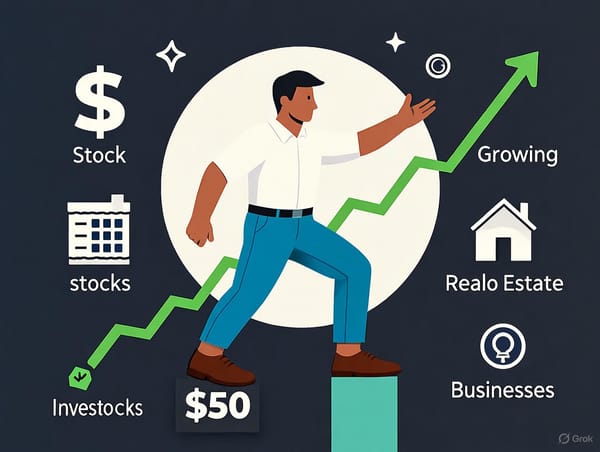Energy Unlocked
Unlock sustained energy and banish midday slumps with the simple, smart trifecta of hydration, balanced meals, and short bursts of activity.

We’ve all been there: the clock strikes 2 p.m., and suddenly, your energy plummets. The morning’s momentum fades, your focus blurs, and the only thing you can think about is a nap or another cup of coffee. But what if you could unlock a steady stream of energy that powers you through the day without the crashes or jitters? The secret isn’t found in a magic pill or an obscure superfood—it’s in the simple, intentional choices you make about hydration, nutrition, and movement. In this extended exploration, we’ll dive deep into the art of sustaining energy the smart way, so you can say goodbye to midday slumps and hello to unstoppable days.
The Foundation of Energy
Let’s start with something so basic it’s often overlooked: water. Your body is roughly 60% water, and even mild dehydration can sap your energy, cloud your thinking, and leave you feeling sluggish. Studies suggest that losing just 1-2% of your body’s water content can lead to noticeable fatigue. Yet, how often do we reach for a snack or caffeine when what we really need is a glass of H2O?
Hydration isn’t just about guzzling water mindlessly, though—it’s about timing and balance. Begin your day with a tall glass of water before your coffee or breakfast to kickstart your system. Throughout the day, aim for a steady intake rather than chugging a liter all at once. A good rule of thumb is to sip water every 30-60 minutes, especially if you’re sitting at a desk or in a dry, air-conditioned space. To make it more enjoyable, try infusing your water with slices of cucumber, lemon, or mint. Not only does this add flavor, but it also subtly encourages you to drink more.
Electrolytes play a starring role here, too. Sodium, potassium, and magnesium help your cells maintain fluid balance and support muscle and nerve function—all critical for feeling energized. If you’re active or sweating a lot, consider a natural electrolyte boost from coconut water or a pinch of sea salt in your glass. Hydration isn’t glamorous, but it’s the bedrock of an energized day.
Balanced Meals
Food is your body’s fuel, but not all fuel is created equal. A sugary donut might give you a quick spike of energy, but it’s followed by an inevitable crash as your blood sugar plummets. The key to sustained energy lies in balanced meals that combine complex carbohydrates, lean proteins, and healthy fats. This trio works together to provide a slow, steady release of energy rather than a fleeting burst.
Carbohydrates: The Slow-Burn Powerhouse
Complex carbs—like whole grains (quinoa, brown rice, oats), sweet potatoes, and legumes—are your best friends. Unlike their refined counterparts (white bread, pastries), they’re packed with fiber, which slows digestion and keeps your blood sugar stable. Start your morning with a bowl of oatmeal topped with berries, or swap that lunchtime sandwich for a hearty grain bowl with veggies. These choices deliver energy that lasts hours, not minutes.
Proteins: The Sustaining Force
Protein isn’t just for muscle-building gym buffs—it’s essential for energy, too. It helps repair tissues, stabilizes blood sugar, and keeps you full longer, preventing those hunger-driven energy dips. Aim for lean sources like eggs, chicken, fish, tofu, or lentils. A mid-morning snack of Greek yogurt with a handful of nuts or a hard-boiled egg can bridge the gap between breakfast and lunch without weighing you down.
Fats: The Unsung Hero
Healthy fats—like those in avocados, nuts, seeds, and olive oil—often get a bad rap, but they’re crucial for long-term energy. They’re dense in calories, meaning they provide a concentrated fuel source that your body can tap into gradually. A slice of avocado toast or a drizzle of olive oil on your salad isn’t just delicious—it’s a smart energy investment.
The magic happens when you combine these elements. Picture a lunch of grilled salmon, quinoa, and roasted vegetables with a tahini dressing. It’s satisfying, nutrient-rich, and designed to keep you humming along until dinner. Timing matters, too: eating every 3-4 hours prevents energy valleys and keeps your metabolism firing.
Short Bursts of Activity
You don’t need to run a marathon to feel energized—sometimes, less is more. Short bursts of activity, often called “exercise snacks,” can jolt your system awake and boost circulation without requiring a gym membership or hours of commitment. The science backs this up: even 5-10 minutes of movement increases blood flow, delivers oxygen to your muscles and brain, and releases endorphins that lift your mood and alertness.
Movement That Fits Your Day
The beauty of this approach is its flexibility. Stuck at a desk? Stand up and do a quick set of stretches—reach for the ceiling, twist your torso, or roll your shoulders. Waiting for your coffee to brew? Try a minute of jumping jacks or a brisk walk around the kitchen. If you’ve got a little more time, a 10-minute walk outside can double as a mental reset, especially if you soak in some sunlight to regulate your circadian rhythm.
Why It Works
These mini-moments combat the sedentary slump that creeps in after hours of sitting. They also improve insulin sensitivity, helping your body use glucose more efficiently for energy rather than storing it as fat. Plus, movement breaks up monotony, giving your brain a chance to recharge. The trick is consistency—aim for a burst of activity every hour or two, and watch how it transforms your day.
Mindful Energy Boosters
Hydration, balanced meals, and movement form the core of sustained energy, but a few extra habits can take it to the next level. Sleep, for instance, is non-negotiable—7-9 hours of quality rest primes your body to tackle the day. Skimp on it, and no amount of coffee will save you. Stress management counts, too: chronic cortisol spikes drain your reserves, so carve out time for deep breathing, meditation, or even a quick laugh with a friend.
Caffeine can be a friend or foe, depending on how you wield it. A morning cup of coffee or tea is fine—great, even—but avoid piling it on late in the day, as it can disrupt your sleep and set you up for tomorrow’s slump. Instead, if you need a pick-me-up, try a square of dark chocolate (70% cocoa or higher) for a gentle lift with antioxidants to boot.
Putting It All Together
Imagine this: You wake up, drink a glass of water, and enjoy a breakfast of scrambled eggs with spinach and whole-grain toast. Mid-morning, you sip infused water and snack on almonds while taking a five-minute stretch break. Lunch is that salmon-quinoa combo, followed by a brisk walk. In the afternoon, you stay hydrated, sneak in a few desk-side lunges, and power through your tasks with focus. By evening, you’re still alert, winding down with a light dinner and a good night’s sleep ahead.
This isn’t a fantasy—it’s a blueprint. Energy isn’t about forcing your body to keep up; it’s about fueling it smarter. With hydration as your base, balanced meals as your engine, and movement as your spark, you’ll unlock a level of vitality that carries you from sunrise to sunset. No more slumps, no more crashes—just a steady, unstoppable you.





